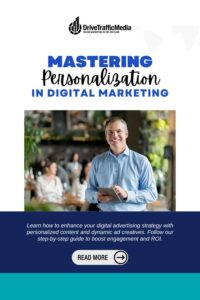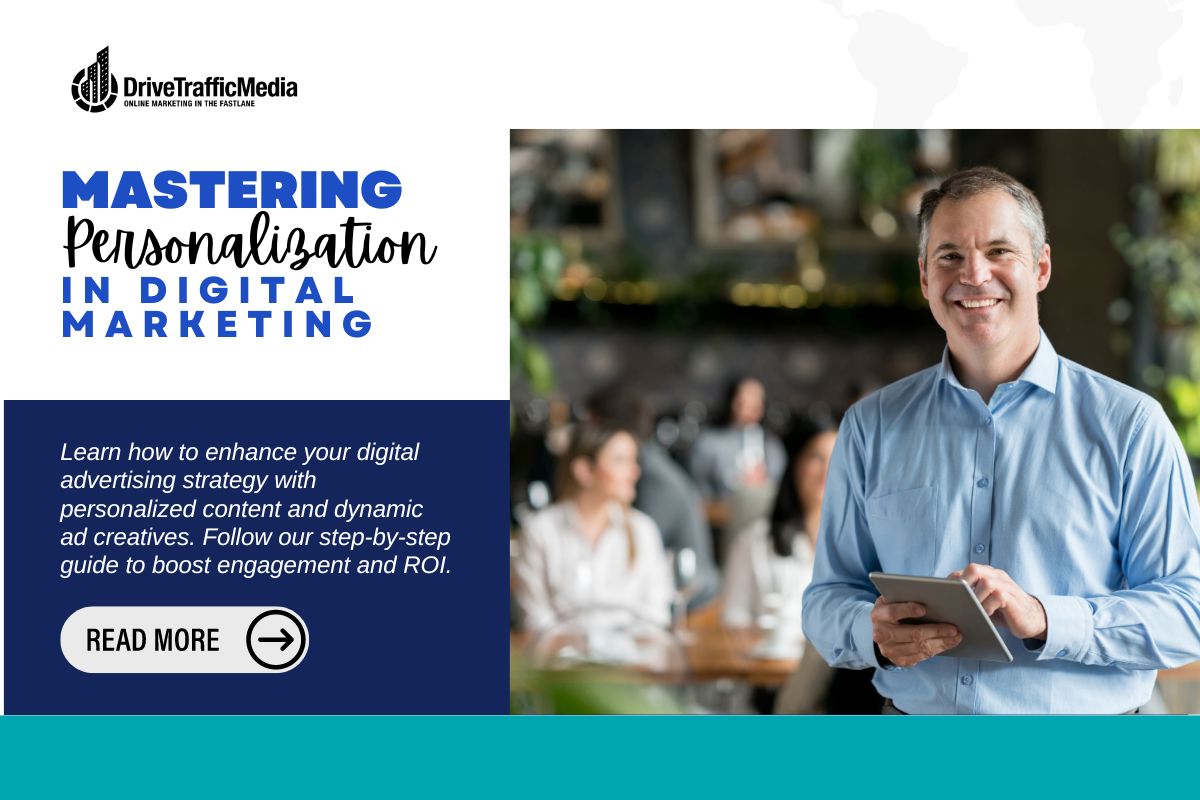What are personalization techniques? They are tactics that provide unique shopping experiences to your customers based on their needs and wants. To do this, you must know who your audience is (e.g., how old they are, what city they’re coming from) and what they do on your website. You can adapt certain areas to suit their needs by analyzing their behavior. They’ll be very impressed!
Don’t worry, it’s not as difficult as it sounds! Orange County SEO experts agree that it’s the small things that count. So, if you don’t know where to start personalizing, start with the five items below.
Homepage
You’ll probably be prompted with a cookie policy whenever you visit a site for the first time. You know, the one that usually says, “Our site uses cookies to make your site experience better; browsing further means you agree to the site’s terms and conditions.” There’s been a lot of talk about cookies and privacy concerns lately, but we can’t deny that cookies are still valuable to our browsing experiences. Websites remember you and tailor your next experience to your needs and wants. That’s why if you’re a repeat customer on an e-commerce website, you don’t usually need to write down your billing details again. You can probably also go through your browsing history to go through products you were interested in. So, the next time you visit a website and products you’re interested in magically appear, it’s probably because of cookies!
Recently Viewed Items
And speaking of items you’re interested in magically appearing, there’s a good reason behind it. Most online shoppers don’t buy everything they need in one go. Sometimes they want to do their research before investing. They’d look at your competitors’ websites, review your reviews, debate whether it’s worth the price, and more. Or, they could be out of money and looking for their next purchase come payday. Whatever the case, you need to be ready for when they return. You should pull up their recently viewed items and compel them to buy them now. Messages like, “Are you still interested in this item?” or “So-and-so from City, State has recently purchased this!” make great calls to action. Besides pulling up their recently viewed items, you should also suggest products that are similar to them. For example, if they were shopping for moisturizers, you can then recommend serums or toners to go along with it.

Product Selection
If you have a lot of products to choose from, you can make customers make the selection for you. Do this by separating everything into categories and subcategories and installing a search engine on your e-commerce website. For example, suppose your customers are only interested in a product within their price range, space-efficient, and of a specific color. In that case, that makes your personalization job much easier! Another option is to personalize the product yourself. This is one of the most fun personalization techniques, and it ensures your customer gets something unique to them. For example, if you sell cardholders or wallets, why not take it further and add customers’ names? They can also choose the font, face, and color of the word.
Location
If your brand spans cities, states, and even countries, it would be a wasted opportunity not to choose location-based. It would help if you took advantage of what every location offers so customers will be more attracted to your brand. Who knows? People might even travel to another place just to have whatever you have there! One notable example of this is McDonald’s. With over 38000 locations across the globe, the menu is super diverse! Don’t just settle for the Big Macs and Quarter Pounders of the United States. Why not order a McChicken Mozzarella from South Korea, a Cordon Bleu Burger from Poland, a Spicy Paneer Wrap from India, or an Oreo McShake from Uruguay? Another reason you want to be location-based is that you don’t commit a faux pas. For example, if you’re based in the United States but want to expand to the rest of the world, the last thing you want to do is use the imperial system and dollars on your e-commerce website. You also wouldn’t like to offer pork dishes in an Islamic country!
Email Marketing
While it might seem old school, email marketing is still an effective way of generating leads. That’s because you’re heading straight to your customers’ inboxes—calls-to-action are hard to ignore if they’re addressed directly to you! Always keep your customer’s preferences in mind. If they only want to be emailed about product releases or sales, then only email them about them. Address them directly by name, so it doesn’t seem like a mass send, and consider shooting them a greeting during their birthdays too! You can even offer a small discount as a gift.
Mastering Personalization in Digital Marketing Ads
Given the constantly evolving landscape of digital advertising, it’s essential to stay updated with the latest trends and focus on strategies that yield the best results. In 2024, one particularly promising area to focus on with digital ads is personalization. Here’s a step-by-step plan on how to approach this:
1. Data Analysis and Audience Segmentation
– Start by analyzing your existing customer data to identify patterns, preferences, and behaviors.
– Utilize advanced analytics tools to segment your audience based on demographics, interests, browsing behavior, purchase history, etc.
2. Dynamic Content Creation
– Develop personalized ad creatives tailored to different audience segments. These could include dynamic product recommendations, personalized messaging, or customized visuals.
– Implement dynamic content delivery systems that can adapt the ad content in real-time based on user interactions or preferences.
3. AI and Machine Learning Integration
– Incorporate artificial intelligence and machine learning algorithms to automate the process of ad personalization.
– Use predictive analytics to anticipate customer needs and deliver targeted ads at the right moment in the customer journey.
4. Omni-channel Integration
– Ensure a seamless experience across all digital channels, including social media, search engines, websites, and mobile apps.
– Implement cross-channel tracking and attribution models to understand the impact of each touchpoint on the customer’s journey.
5. Interactive and Immersive Ad Formats
– Experiment with interactive ad formats such as AR/VR ads, shoppable ads, or gamified experiences to enhance user engagement.
– Leverage emerging technologies to create immersive brand experiences that resonate with your target audience.
6. Ethical Data Usage and Privacy Compliance
– Prioritize user privacy and data security by adhering to industry regulations such as GDPR, CCPA, and other data protection laws.
– Obtain explicit consent from users before collecting and utilizing their personal data for ad targeting purposes.
7. Continuous Optimization and Testing
– Implement A/B testing and multivariate testing to refine your ad campaigns and identify the most effective messaging, visuals, and targeting parameters.
– Monitor key performance indicators (KPIs) closely and iterate on your strategies based on real-time insights.
8. Collaboration with Influencers and Content Creators
– Partner with influencers and content creators who align with your brand values and resonate with your target audience.
– Leverage their reach and credibility to amplify your message and drive engagement with your digital ads.
9. Harnessing the Power of Snippets for Enhanced Personalization:
– Snippets are brief, informative text snippets displayed in search engine results.
– Implement structured data markup to generate rich snippets.
– Use schema markup to mark up key information for display in search results.
In conclusion, personalization techniques in digital marketing are essential for providing unique shopping experiences tailored to your customers’ needs and wants. By analyzing customer data, utilizing cookies, and implementing dynamic content creation, you can enhance user engagement and drive conversions. Location-based personalization and email marketing are also effective strategies to consider. Embracing these techniques will not only impress your customers but also lead to better results for your business. Remember, it’s the small things that count, so start personalizing today to see the difference it can make in your digital marketing efforts! Partnering with a reputable digital marketing agency like Drive Traffic Media can further enhance your personalized campaigns, ensuring they are executed flawlessly and drive optimal results for your business.
See related blog here: https://www.drivetrafficmedia.com/how-to-personalize-user-experience-on-your-website-design/
